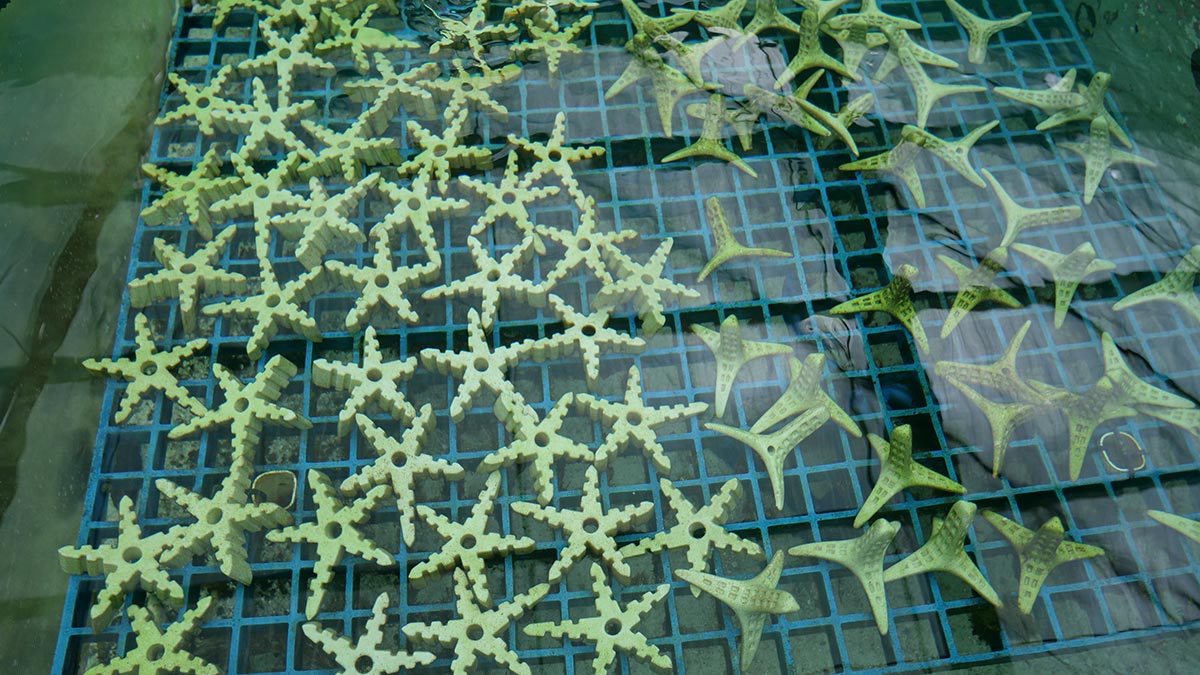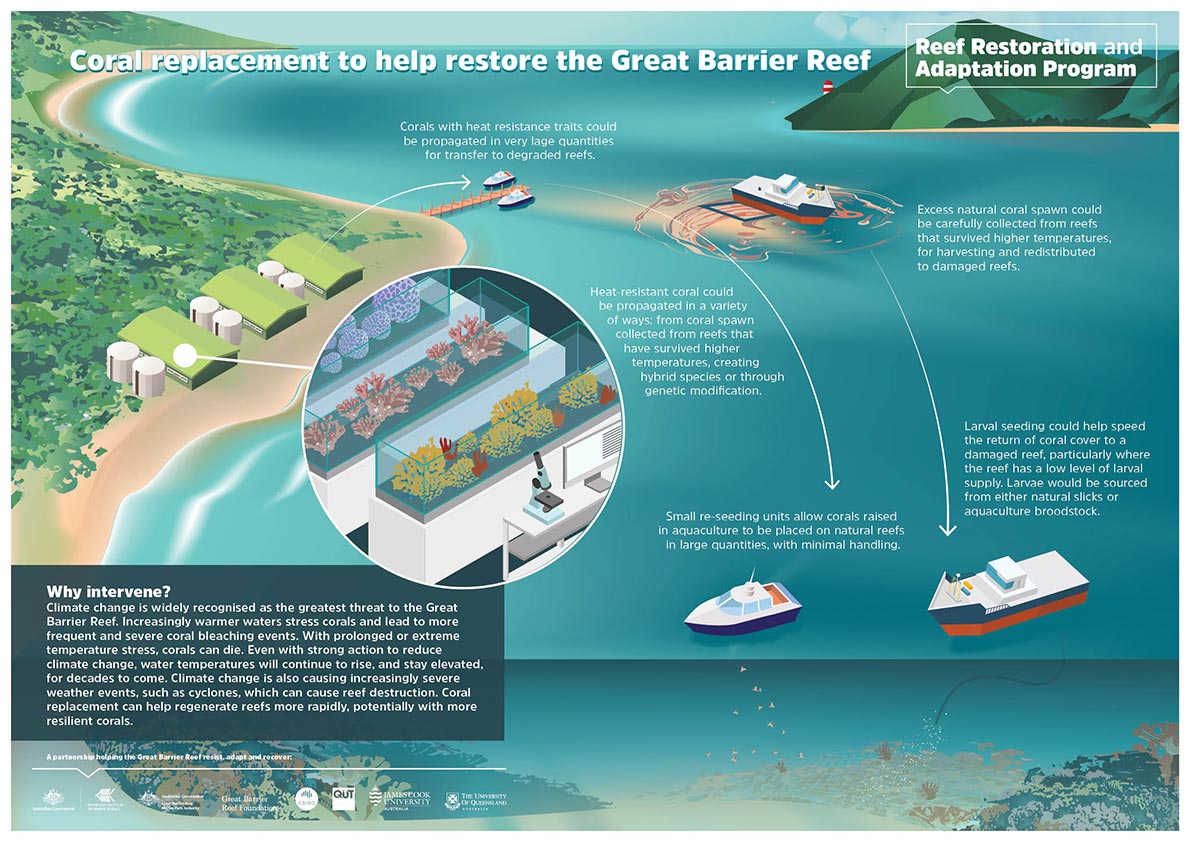Coral seeding by larval slicks settled on devices

Functional objective:
Enhance coral reproduction and recruitment on recovering reefs, following disturbance
Delivery method:
Assisted transfer of larval slicks and device-based settlement
Deployment scale:
Medium (20 or more reefs) to large (200 or more reefs)
Subprogram:
Coral seeding aims to speed the return of coral cover to a disturbed or damaged reef by increasing the number of available coral larvae for natural settlement, particularly where the reef has a low larval supply (e.g. following a large-scale bleaching event).
The aim is to increase the number of corals that ultimately recruit into reef populations.
A promising method of efficient dispersal is the use of small, re-seeding units (such as the tetrapods developed by SECORE pictured) that allow corals to be placed on reefs with minimal handling. This significantly reduces time spent re-locating and planting cultured corals. Millions of these units could be deployed to accelerate recovery at large scales.
Harvesting wild coral larval slicks is likely to have a minimal negative impact on Reef ecology, as the mortality rate of the larvae in a slick is typically high.
Compared with re-seeding just a few species, it offers the potential to capture a diverse range of species and allow the re-establishment of reef communities.
While coral spawn naturally travels long distances between reefs, relocating wild corals would require measures to ensure the introduced corals did not harm the local population.
This potential intervention would settle coral slick-captured larvae onto devices and deploying onto local or regional reefs. It merges the larval slick and aquaculture methods and is designed to increase the number of corals created within the short annual spawning periods.







